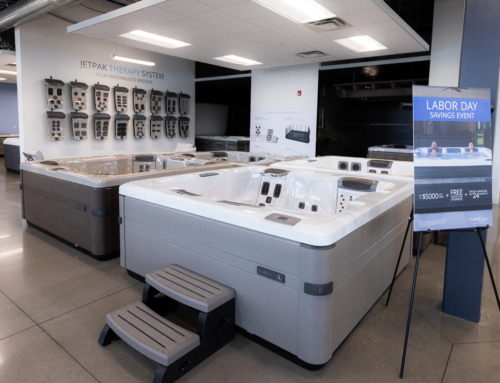A common misconception about negotiating is that in the end there will be a winner and a loser. This simply is not true. Forbes defines negotiation as “a conversation whose goal is to reach an agreement with someone whose interests are not perfectly aligned with yours.” In the hot tub business it may seem that your and your customer’s goals are aligned – you want to sell them a spa and they want to own one – but it isn’t a perfect alignment because the buyers rarely want to pay the seller’s asking price. So what do you do? You negotiate. How do you do it? You keep your mouth shut.
The Silent Treatment
Okay, you don’t have to keep your mouth shut all the time. That would be silly. You do, however, need to be prepared to LISTEN more than you talk. Very few people enjoy being “sold” but nearly everyone likes to buy. The best way to encourage customers to buy your product at a price as close to list as possible is to listen to their needs and wants. Aqua Magazine has three tips for turning silence into sales:
- Seconds: During negotiations, wait ten seconds before responding to a customer offer. People generally find silence uncomfortable and will often rush to fill the void with another offer before the ten seconds are up.
- Pause: Don’t rush through the sales pitch. It isn’t about how much information you can give them in the shortest amount of time. Be deliberate with your speech. Take brief pauses between sentences. A simple one-two second break allows customers to process the information they’re being given. Use the pause to emphasize your words.
- Ask: Asking questions gets the customer talking and when you listen to what customers are saying, you are gaining an understanding of what they really want. Customers feel more confident working with a salesperson who listens to what they want than they do working with someone who tells them what they need.
Successful negotiators realize that, often, what you don’t say is even more powerful that what you do say. So the next time you step out onto the sales floor, think SPA: Seconds-Pause-Ask and let the customer lead you to the selling point.
The Anchoring Effect
Once a ship drops anchor it can only float in a limited radius around that anchor. As a hot tub salesperson, the price of spa is the anchor and all other offers will float in the limited radius of that first offer. The question is whose price will it be? Yours or the buyers? It all comes down to who makes the first offer, who puts the first number out there. Research has shown “that the final price is usually closer to the first offer than the second.” That means you, the salesperson, needs to get your price on the table first. When deciding on a number, keep these points in mind:
- Higher prices tend to make customers consider the benefits of the deal
- Lower prices tend to make them consider the downsides of the deal
- Don’t be overly generous with your first offer
- Don’t price yourself out of the sale altogether
Once you have made your initial offer, it’s important for both parties to understand that the ultimate goal of the negotiation is for each party to get the best deal possible. Remember, you are not competing to get the highest price, you are cultivating a lifelong sales relationship.
Research has shown “that the final price is usually closer to the first offer than the second.”
Sealing the Deal
Customers want to feel like they have gotten the absolute most for their money. As a result, they will sometimes make an offer that is simply not reasonable. When you’ve presented your anchor price and they respond with something like “that’s really out of our budget,” consider these options.
- Use the ten second silence. There really isn’t much you can say here because you have no control over their budget. Also, in most cases, the customer will use that silence to explain their rationale.
- You can (and should) explain why the price is what it is. Customers want to know that you didn’t just pluck a number out of the sky. They want to know why they should pay more for your product than someone else’s.
- Turn the question back on them by asking “what would be in your budget” and then pointing them to a product in that price range. Be sure to explain why this one costs less than the original one (which is usually the one they really want).
- While important, you want to avoid negotiating on price alone. Identify the number of ways you as a dealer can add value, like upgrade options, accessory packages, delivery, service, and maintenance programs. This also serves as a good opportunity to learn more about what the customer prefers and what their priorities are.
- Understanding what your customer values allows you to make smarter concessions. Start by offering those things the customer values most but comes at a lower cost for your business. Again, this could be a service follow-up or even an alternate payment schedule.
The “out of our budget” statement is a great opening for you to point out the various differences between models to illustrate why there is a difference in price. Harvard Business School lecturer, Kevin P. Mohan says that “if you can explain why you’re making a reasonable request and deliver it with a smile, hopefully you can keep the other person in the room and see what happens next.”
Selling Yourself
A point that many salespeople tend to forget is that they aren’t just selling a product, they’re selling themselves. Customers are more likely to buy from someone they trust. How do you create that trust? By being prepared, being credible and being able to neutralize the competition.
- Be Prepared: This means not only knowing your merchandise, but also knowing the competition. Know what price you have to have to make a profit. Know how much you are authorized to lower the price. Know your limit and be prepared to walk away from the sale if necessary.
- Establish Credibility: Find out what the customer really wants, help them clarify their true needs then help them find the product that best meets those needs. When customers see that you are focused on finding the best product for them, rather than on selling them the most expensive product, they are more likely to make a purchase even if it ends up costing a little more than they intended to pay.
- Be Transparent: Acknowledge the dual needs of the sale: the customer wants a good deal and you need to keep a business running. Experience proves that negotiation conversations tend to be most productive when the two parties are open and direct in their communication. Always be willing to offer explanations for your needs so they understand that while you want to satisfy their needs, you also have to look out for your own.
- Neutralizing Competition: Convince your customer that your product offers exactly what they need. When they have exactly what they need right in front of them, there is no need to go to the competition, even if the competition has a lower price. It’s your job to make sure the customer understands the value that comes with the price tag.
In Closing…
Probably the number one most important negotiating tactic is that we aren’t “selling” a product to a customer. We are, instead, assisting customers in “buying” a product they want. Rudy Stankowitz, owner of Aqua-Caribbean, LLC, reminds us that “the goal is to gather information so that we can match a solution to our customer’s needs.” His best advice is this: “Ask our customer open-ended questions, continue to use “we” instead of “you” or “I”, then shut up and listen.”









Leave A Comment